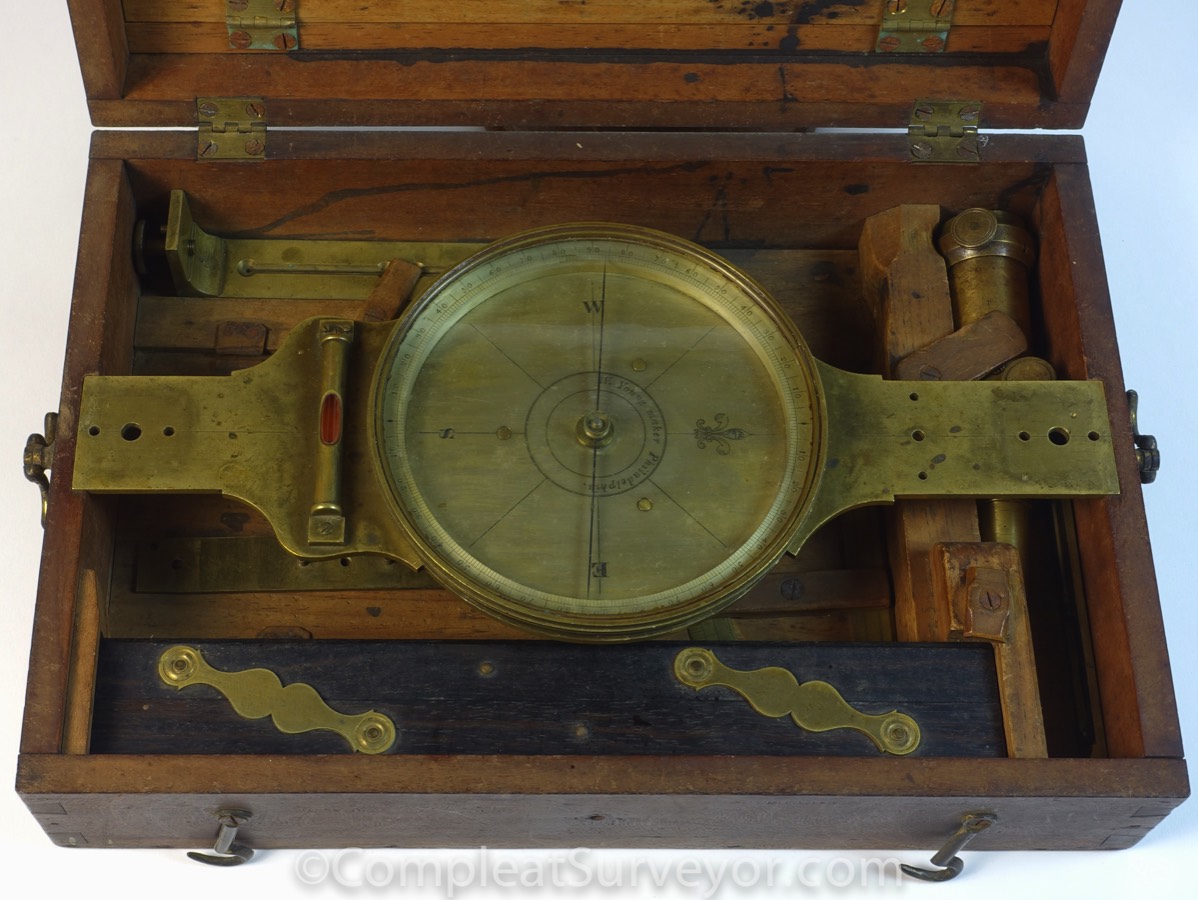
Oldest William Young Compass - Circa 1823
William Young Likely Made This Compass Shortly After Thomas Whitney Died
William J Young was one of the most important surveying instruments makers in this country. Young invented the standard transit and built the first variation and solar compasses for William A Burt. Young was also the most prominent and prolific instrument maker in the country from 1825 until the Civil War. Smart's book contains a fascinating discussion of Young's focus on building the country's finest Graduating Engine, which would allow Young to produce the most accurate instruments.
Young apprenticed for Thomas Whitney from 1813 until 1820, and likely continued to work for Whitney until Whitney died in 1823.
This compass has tremendous display potential. For starters, Young signed the instrument "W. Young", making this the ONLY known instrument Young signed that way. A prominent Young collector owned this instrument, and it was generally thought that Young made this instrument shortly after Thomas Whitney died in 1823 and shortly before Young started his own business. If so, the compass offered here would be the oldest known Young surveying instrument. So you have a GREAT story to tell. I think this story hangs together, as this compass and box definitely look very much like what Thomas Whitney was selling late in his life. Check out the Smithonian's 1818 Whitney compass, for example.
Next, the instrument box is really neat - it functions as a small desk with a drop down lid, which can be used to store papers when closed. The box also has built in storage areas for holding a brass protractor and a parallel ruler, which are included in the box.
Finally, the compass itself is a nice plane compass with a single vial level (with the level different than the circular levels that Young would later use). The compass was designed to use 4 vanes, with the extra set of sighting vanes being used on an arm of the compass rather than around the compass itself. Unfortunately, one of the sighting vanes is missing, as are the screws to hold the sights and the sighting vane bar. (I can recommend a skilled instrument repair person who should be able to duplicate the missing vane and screws at a reasonable cost).
In sum, this is probably the oldest known instrument made by one of the most important instrument makers in America, and the instrument sits in highly functional box that presents extremely well.
Price: SOLD
Email Russ

© 2020 Russ Uzes/Contact Me